Welcome and hello. This is the second of a three part series about America and its place in the world. Part one looked at America’s commitment to Europe. Today it’s about protecting Ukraine, and whether the US and EU can do it. In a couple of weeks part three will look at the US commitment to East Asia.
Happy holidays. May your days be merry and bright, and here in the south, where college football is its own holiday and religion, may your home team make it to the playoffs.
Content is free on CS&W. There’s no paywall, but if you like what you read I’d be grateful if you’d subscribe for $5 a month or $50 a year for 2025. You tip your bellboy, don’t you? Of course you do. I have probably approximately as much insight as him. Probably.
WHAT TO DO ABOUT UKRAINE
How quaint we were back when we were thinking the German Chancellor could declare a zeitenwende and it would matter. Standing before the Bundestag on the fifth day of Russia’s war on Ukraine in February, 2022, Olaf Scholz declared “the beginning of a new era for Germany’s security and defence policy.” On the third anniversary of that speech in about ten weeks time, his administration will have just been shown the chilly open door to the Tiergarten.
The real turning point wasn’t about Scholz’s Social Democrats, or Germany or even Europe. The real zeitenwende, of course, is the second election of Donald Trump. The bad dude in chief is coming back.
Back in September Volodymyr Zelenskyy travelled to the United States to present his ‘victory plan’ to Joe Biden and speak to the United Nations General Assembly. As the Ukrainian president left town, Novaya Gazeta summed things up that Zelenskyy had “rounded off a full week of screaming into the void of US politics.”
That was election season, but now that it’s over, Zelenskyy has little reason to stop screaming.
Americans should bear in mind that the rest of the world isn’t trained up on breathless US media. In round one of Trump v. the national psyche from 2016 to 2020, American cable presented a President Trump trembling with rage that Zelenskyy declined to collude with him against the Biden crime family.
People in Kyiv and Moscow don’t much care what President Trump trembles with, and the American press peddles an inflated idea of their country’s agency in other people’s affairs. The truth, Truth Social or otherwise, is that Donald Trump may not be able to end Russia’s war on Ukraine.
If the returning President Trump means to be a disruptor, his appointments suggest his sights are set on domestic disruption first. More or less establishment figures Senator Marco Rubio (Secretary of State), Congressman Mike Waltz (National Security Advisor) and former NSC official Keith Kellogg (Ukraine envoy) point to an entirely more conventional approach to international affairs than the domestic appointments of Kash Patel, Russell Voight and Bobby Kennedy Jr.
The president-elect has kept his own counsel on Ukraine. His suddenly invisible Vice-President-elect, JD Vance, has suggested a freeze in place along battle lines. Kellogg, a retired Army Lieutenant General, has proposed that Ukraine “not be asked to give up its ambition to regain all land seized by Russia, but Kyiv should agree to use diplomatic means only and realize that it might take a long time to regain all the territories.”
I think there’s no reason to believe Mr. Trump isn’t serious about trying to stop the fighting. It’s just that getting from here to there is more fraught than his campaign made it look.
The US will now install a new administration and enter a period of policy reviews, internal power consolidation and perhaps another foreign policy shift away from Europe and toward East Asia. It’s safe to say it will be some time before a comprehensive US peace initiative for Ukraine is ready, if indeed one is ever to come.
President Zelenskyy is now suggesting that he could accept a cease fire in return for NATO security guarantees. He’s trying to flush out his supporters in the West, to get them on the record about how much support he can expect from them in negotiations.
It won’t be as much as he would like. Kellogg, for example, has been clear that he would discourage Ukrainian NATO membership as a bargaining tool to bring Russian President Vladimir Putin to the table. (Ukrainian media are calling that “blackmail with military aid.”)
The Kellogg plan seems inclined to allow Russia to keep the territory it seized, keep Ukraine out of NATO and I can’t find much about security guarantees or deterrence for Ukraine.
(Here's his plan. See what you think.)
GETTING TO A CEASEFIRE [THE DAY ONE STUFF]
Ukraine can not defeat Russia. It can’t even stop fighting until Vladimir Putin does. There are too many issues for the new American president to solve in 24 hours as he boasted he would. Ukraine hasn’t been solved because it is a hard problem. And it’s about to become Donald Trump’s hard problem.
Still, a few things are easy enough to predict: for one, the newly installed president, considering himself a colossus astride the globe, will soon try knocking international heads together, demanding ‘negotiate.’ Suppose the Russian president plays along.
“I’m ready, I have been ready all along,” Putin declares from the winter darkness of Red Square. “My price for sitting with the Nazi Zelenskyy is Ukraine out of Kursk.”
Trump thinks, eh, I gotta get ‘em talking. If he thinks that’s the price for negotiations, he demands that Ukraine pull back.
Or this: once the Trump negotiators find their new offices, the way to the coffee machine and finally get around to calling Russia, their interlocutors accept negotiations on the spot. “We are ready to exchange envoys next week,” they say. “We’ll convene, we’ll appoint negotiators, we’ll hold rounds of meetings and our talks will culminate in a summit in the fall.” Can you not see Donald Trump boasting all summer about how he has summoned Putin to the table in the fall?
But a new Trump administration can also see that its client in Kyiv has been slowly losing ground in the fighting this fall. It can’t very well abandon Ukraine right here at the beginning.
The Biden administration would be a handy whipping boy, so maybe our rabble rousing new president will loosen some Biden-era restrictions. That would poke both Biden and Putin in the eye in a single stroke in hopes of stabilizing Ukraine’s position before substantive talks in the fall.
Through whatever political machinations an interim ceasefire is achieved, its general contours are already visible. Before substantive negotiations there will be a demilitarized zone (the JD Vance plan) and peacekeepers with yet-to-be negotiated authority.
Whenever negotiations begin, though, a comprehensive, substantive settlement is an entirely different prospect, and it feels far away.
Every step of the way Ukraine will demand security guarantees. The reason the 2022 and 2023 Minsk agreements in Donbas failed was that peacekeepers weren’t given sufficient enforcement capability; Russia and the Donbas ‘separatists’ it sponsored continued low level warfare, and fighting never completely stopped.
Russia will likely want a similar arrangement this time around. Maintaining the ceasefire will be a substantial early negotiating challenge.
ENTER EUROPE
If and when General Kellogg negotiates an interim ceasefire leading to formal peace talks, maps with the armistice line should be painted bright, Rubicon red and distributed throughout every European capital and around every conference table in Brussels, because it will surely mark an important founding contour of the New European World Order.
What Europeans do next will be everything.
Their challenge? How, short of NATO membership, to guarantee Ukrainian security. Researchers, analysts, experts, politicians and the guys down at the barber shop have warned European leadership for years and years that trouble was coming and they have urged policy makers to carry their load and do something about it.
Alarm bells have rung since Russia’s invasion of Crimea — for ten years now. But now comes a new development; the crisis’s actual arrival date has been confirmed: it’s Monday, January 20, 2025 — inauguration day.
Europe, mainly through two big, powerful machines built since World War II, NATO and the EU, will shortly have to address President Trump’s demands that it must do more to support Ukraine, and it will either rise to the occasion or it won’t.
NATO
October brought new blood with a new mission to NATO headquarters in Brussels. The Norwegian Jens Stoltenberg, whose term was extended by the war, has been succeeded by Mark Rutte, 57, a former Dutch Prime Minister. Rutte has crafted the persona of a pragmatist, a man who rode his bicycle to work, a negotiator and a ‘Trump whisperer’ because it was widely reported that at a 2018 NATO summit he convinced then-President Trump to remain committed to the alliance.
Rutte’s inaugural summit as Secretary General in June 2025 will be a home game, held in The Hague. If that summit becomes an early opportunity for Donald Trump to storm about and frighten Europe as he has before, it’s worth noting a couple of things: first, on the so-called Trump whisperer’s watch, during the almost fourteen years of Rutte’s incumbency, the Netherlands consistently failed to meet its 2.5% NATO spending target. That may not be the look NATO Is after.
One other thing: while some EU countries are willing to underwrite urgently necessary shared Eurobonds to finance increased defense expenditures by Europe as a whole, the main holdouts have been Germany — and Rutte’s Netherlands.
THE EUROPEAN UNION
The European parliament holds elections every five years, most recently in June. The head of its executive, former German politician Ursula von der Leyen, beginning her second term, has just installed her team, swearing in her cabinet last week.
She told members of the European parliament on November 27th that there was “something wrong in [the] equation” where Russia was spending up to 9% of GDP on defence while the European average was 1.9%.
“War is raging at Europe’s borders and we must be ready for what lies ahead, working hand in hand with NATO,” she said.
Obviously true. Her pick to transform the defense of Europe is Kaja Kallas, 47, who resigned as Estonia’s Prime Minister to take on the job of High Representative of the European Union for Foreign Affairs and Security Policy. On her first day on the job Ms. Kallas was in Kyiv, declaring “The EU wants Ukraine to win this war” and doing what she was hired to do – solidarity.
If the incoming EU team in Brussels wants Russia out of Ukraine, it will need more than solidarity; European allies must be prepared to rally round the Ukrainian flag with money and materiel, and even to risk the blood of its own soldiers.
At NATO, Secretary General Rutte is promoting “incentives to drive companies to set up more production lines and hire more workers.” At the EU, Kallas’s proposals are still a work in progress since she only acceded to her post on December first, but she has encouraged European self-sufficiency in defense industries, and she supports using frozen Russian assets to fund Ukraine’s reconstruction.
Meanwhile heavy organizational gears are slowly grinding. At last July’s Vilnius summit NATO endorsed a plan to prepare 300,000 troops to move to its eastern flank within 30 days.
(The new plan specifies “which allies would respond to an attack anywhere from the Arctic and Baltic Sea region through the Atlantic and east to the Black Sea.” This is useful so that Norwegian soldiers don’t show up in Bulgaria in July with snowmobiles, I guess. It’s progress.)
If the incoming US administration demands imposition of a ceasefire in Donbas, Europe must be prepared to take up the mantle of support for Ukraine. It will need to be prepared to assume both the economic and military burdens.
The combined gross national product of European Union countries in 2023 was around USD$18 trillion. Russia’s was USD$2.24 trillion. There is a way to get this done. Is there the will?
Would you not think that responsible stakeholders on the continent would even now be deep into the details of how to make this work? That the foreign ministers of the United Kingdom and the European Union would be flying around in a mad ballet of consultations to have a consensus in hand on January 20th?
You would. Maybe they are. Probably they aren’t.
Here is the central question: If the American president holds NATO out of security guarantees to Ukraine, are the Europeans, working together outside NATO, able to offer their own security guarantees credible enough that Putin wouldn’t test them? I am pessimistic.
Ukraine was never something the US was going to ‘solve’ for Europe; it wasn’t the job of either President Biden or President Trump. We’ve been framing this question wrong, suggesting that the West might tire of defending Ukraine. That’s not what was happening. What was happening was, the US was tiring of carrying Europe’s burdens. Vladimir Putin saw that and he was right.
As Branco Milanovic says, European politicians have spent the years since 2016 treating Donald Trump as a sort of natural disaster they just hoped to survive. Europe can’t reclaim the years since 2016, and now Donald Trump is back. Time to get moving.
SO WHAT DO WE DO?
The easy part: first, European countries should agree to underwrite common bonds to help finance Ukraine’s defense.
Second, European countries should agree to seize Russian assets held by their central banks and give them to Ukraine for defense and reconstruction.
Third, Europe needs a fierce propaganda machine. We’ve watched just this week as Russia has undermined democracy in Romania, a European NATO member, using Tik Tok. Where is NATO in this game? Where is the EU? Modest instruments like the Voice of America and RFERL aren’t getting the job done.
Historian Mike Coté has framed it this way: “Russia has attacked civilian targets, razed Ukrainian cities, massacred innocents, taken children captive, and interdicted food shipments. It has used ballistic missiles, naval bombardment, carpet bombing, and even North Korean auxiliary fighters.” If Europe is involved in a war on its own soil, how about some righteous indignation, sung out loud and long?
And fourth, the hardest - but most imperative - part to bring about: willing European countries, operating voluntarily and on their own, must deploy their own countries’ troops inside Ukraine to declare irrevocable European support.
Ukraine’s weakest point just now isn’t armaments, but rather manpower. A supporting force of soldiers from European countries that opt in could be deployed away from the front lines to handle logistic, medical and other support, everything but frontline duty. This would free up more Ukrainian soldiers for combat.
The British-led Joint Expeditionary Force, set up in 2014, offers a framework over which more European assets could be draped. Participating countries already include Britain, the Netherlands, Poland, the Nordics and the Balts. These could be augmented by France and Romania (which is a direct stakeholder, with a 380 mile border with Ukraine). All EU countries should be encouraged to participate.
This group would operate expressly outside NATO and the United States, denying Russia the opportunity to blame NATO and allowing the Europeans to argue (convincingly) to Donald Trump that they’re taking matters into their own hands. As a further sweetener to the Americans, Europe could loosen its policy on buying within the EU, and buy munitions from the United States.
These proposals do several things. They keep Europe from asking America for deeper involvement, a non-starter for Trump. They demonstrate Europe’s resolve to ensure its own security. They further facilitate interoperability among European troops, and importantly, they introduce the Brits’ and perhaps the French nuclear deterrent.
And for once, at long last, they show a little nerve.
(Nota bene: the gaping security and leadership chasm that is today’s Germany.)
EUROPE’S MOMENT (GULP) AT LAST
Many Americans declare it’s time for a new generation of leadership. In Europe perhaps the 57 year old Rutte brings super powers to NATO. Maybe under the foreign policy guidance of 47 year old High Commissioner Kallas, the European Union can rally continental support for Ukraine. We’ll see.
With 43 days until the new Trump administration, the time to get busy is now, tonight, tomorrow morning, this week, this weekend. So far, do you see any evidence of a surging, new, drop-everything effort at a new policy to largely replace American power with European power in Europe?
Can’t anybody grab Europe by the scruff of the neck and wring a home truth or two into it? No. Apparently no one can.
Will some European countries require a threat massed on their own borders to take their defense seriously? Yes, apparently some of them will.
It’s remarkable how Europe’s leaders, who have never hurried to increase defense preparedness or production, don’t seem to associate their slow pace with the idea that if conflict comes to their own countries, they are the reason, personally, by name. Mesdames von der Leyen and Kallas? Messieurs Macron, Scholz, Starmer, Rutte?
General Sir Patrick Sanders, then the UK’s Chief of the General Staff, warned the Royal United Services Institute in 2022 of the need to mobilize, framing the situation in Ukraine as a “1937 moment,” describing a period of heightened confrontation, likened to a “pre-war” footing in the face of Russian aggression. General Sanders has since retired and two years have been lost.
Europe may play for a bank shot, say a domestic assassin in Russia or another unlikely event, but that is no defense. If European leadership can’t rise to the clear simultaneous challenges of an irredentist Russia and an American withdrawal right now, this month, then this summer, its fate is sealed: the return of Donald Trump will hasten Europe’s 21st century Munich.
Cheers.
You spent a hundred dollars at the grocery store and didn’t get much. You brought home products from Unilever and Johnson and Johnson and General Mills and they don’t have any idea that you did.
If you find CS&W more intellectually stimulating than Kaboom or Febreze, consider that I’ll appreciate your contribution more than Mr. Proctor, Mr. Gamble, their heirs, the Colonel, Wendy, all Five Guys, Mister Frosty or the Big Boy.
There are around 20,000 of my travel photos from 113 countries and territories, on EarthPhotos.com. (I owe you country #114, Moldova. Working on it.)


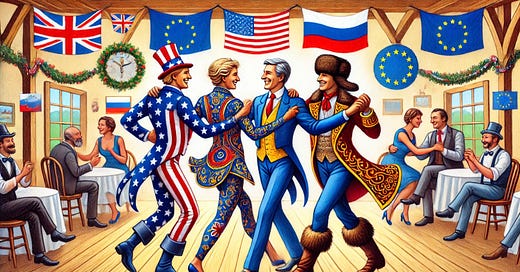



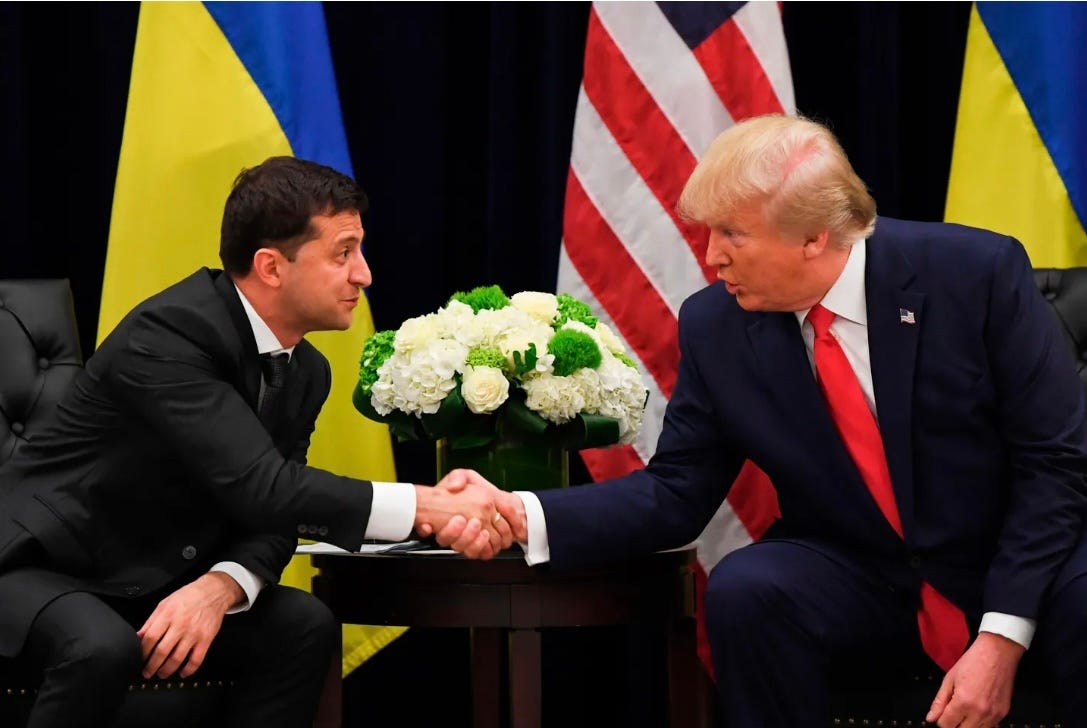
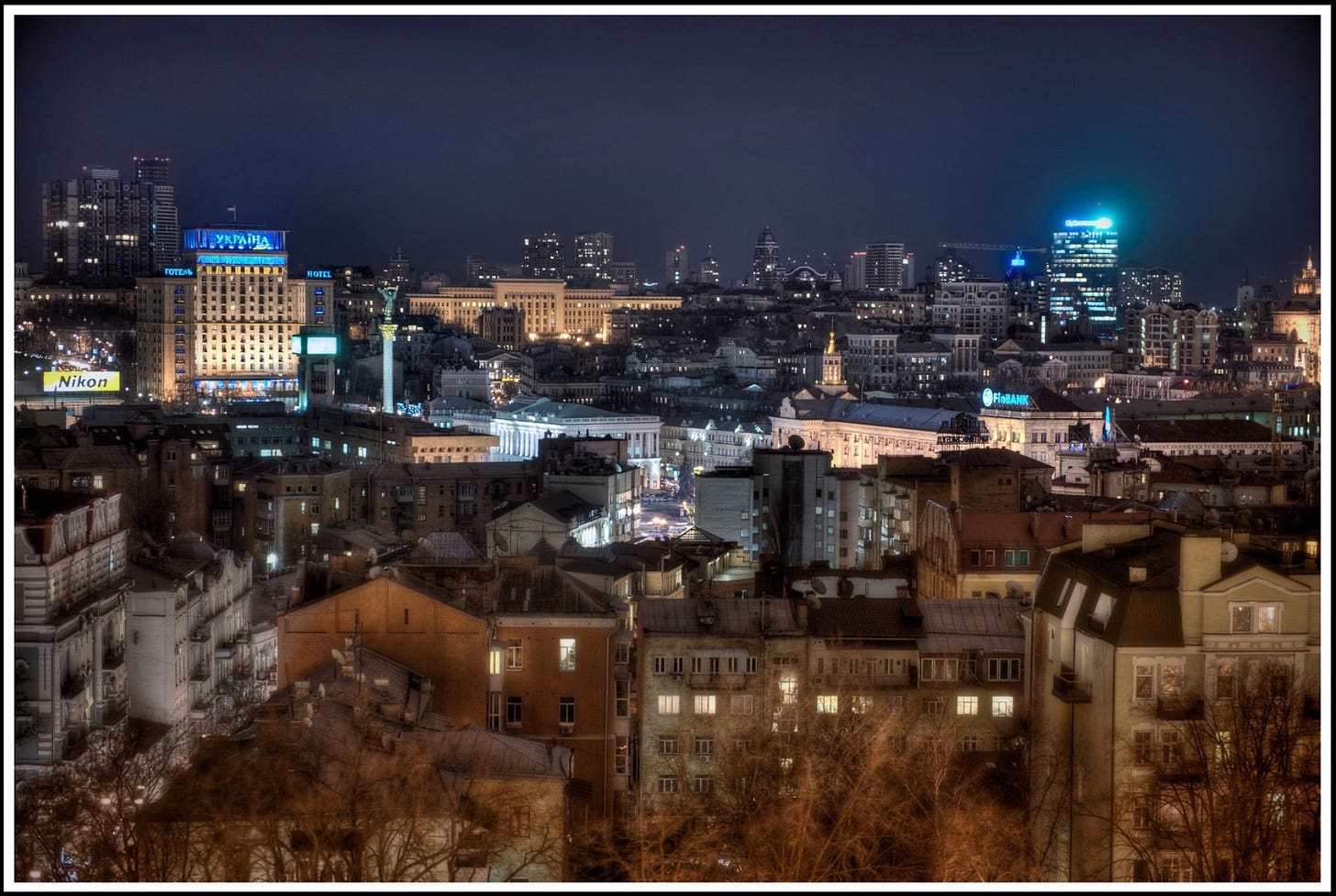
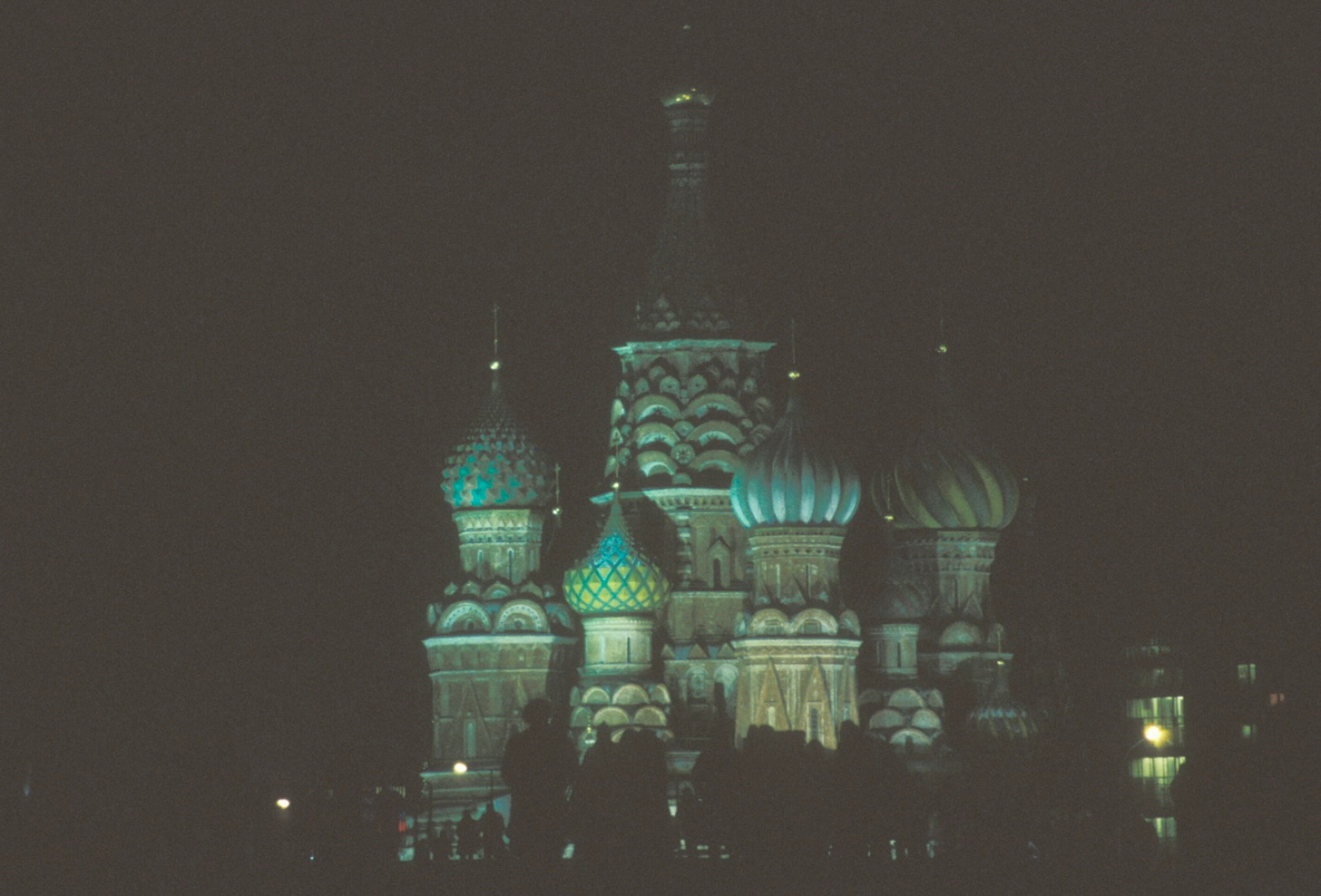
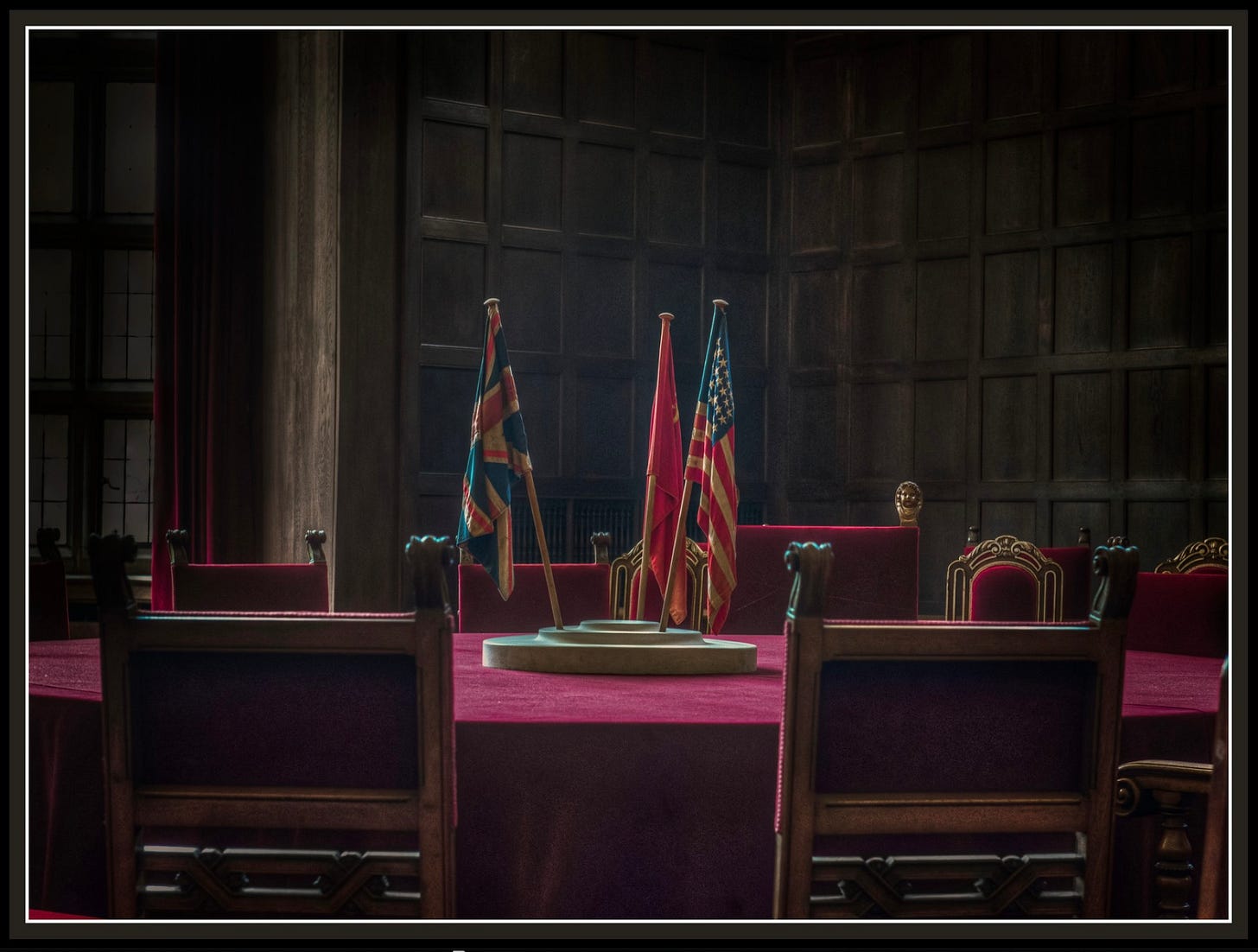

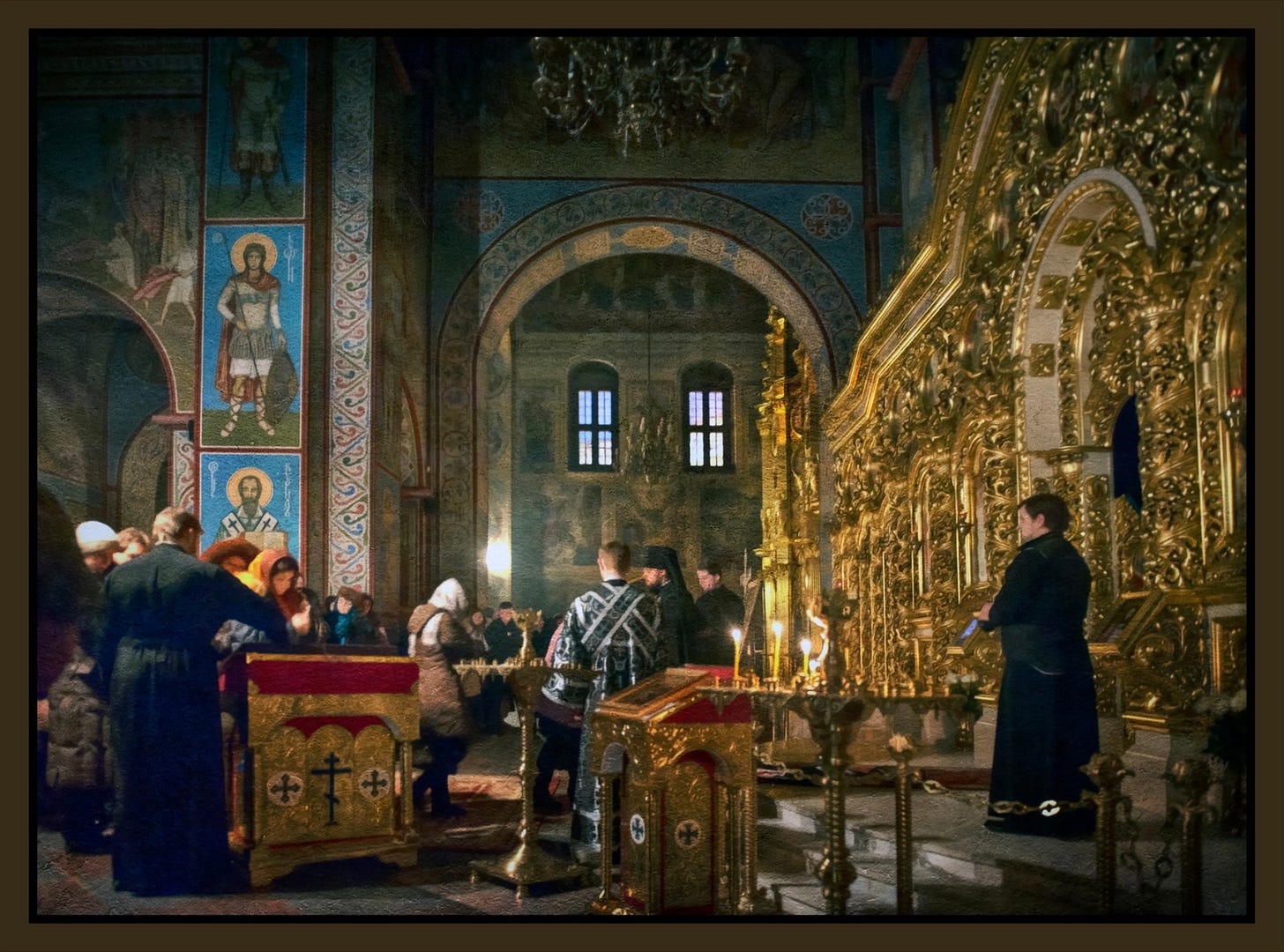
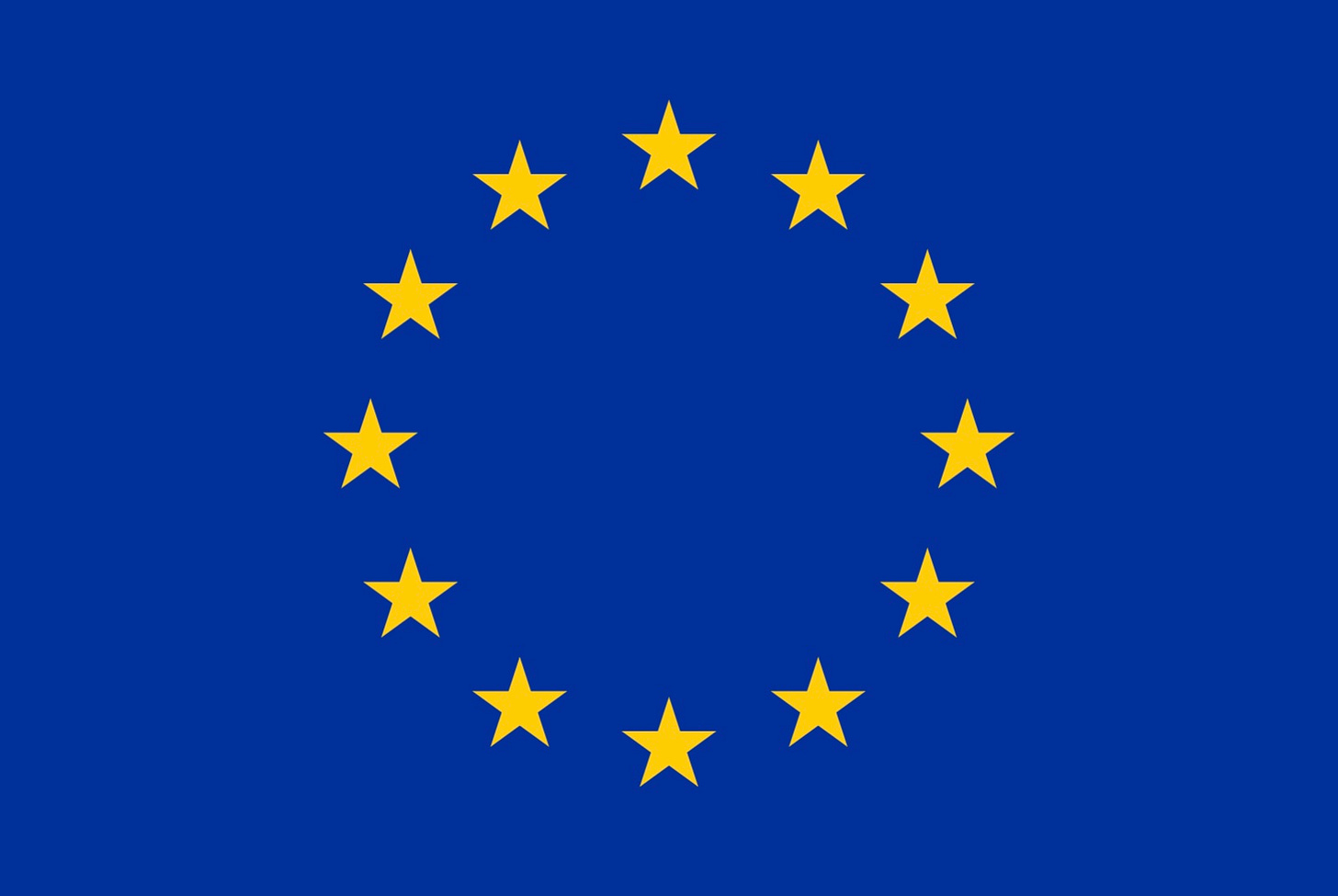


Very informative, Bill! I always look forward to what you have to say Interesting times.